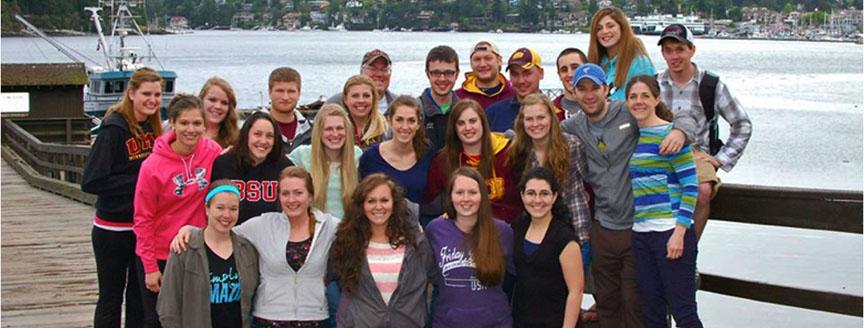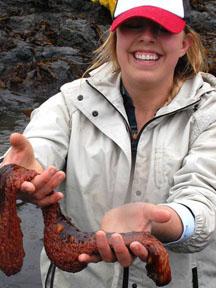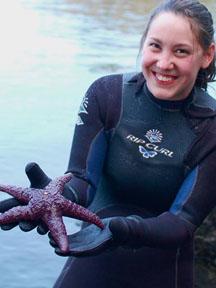Students traveled aboard the RV Centennialto collect various marine invertebrates and fishes, and explored mud flats, beaches and the rocky inter tidal areas to study the adaptation of animals to various habitats. A whale watching trip and a visit to Olympic National Park concluded the 10-day field course.
"A trip like this provides a great way for UMD students to enjoy and learn in an adventurous and engaging way," said Mensinger. "It is these opportunities that get students out of the classroom and into the field that will stick with them through the rest of their lives."
The trip helped students understand the complexity of the ecological system and the food chain ... from the plankton, to star fish, to the cormorants. to whales.“The students loved being out of the classroom observing and touching the animals they have heard and read about for the last four years,” said Mensinger.
Sydnie Mauch agreed. "I want to be a marine biologist and study marine biology in South America. This was the perfect place to start my journey."
Mauch shared highlights of the trip. "My favorite part was whale watching. I couldn't take my eyes off of the water. Seeing the bioluminescence was cool, too." She said her favorite learning activity was working in the plankton laboratory. "First we went out on the water and collected the different species. Then we tried to identify the plankton; it was like a puzzle!"
About Friday Harbor Marine Laboratory
The Friday Harbor Laboratories are located on San Juan Island, part of an archipelago that lies between the mainland and Vancouver Island. They are well situated for research on many aspects of marine biology and oceanography. The waters around San Juan Island are relatively free from pollution, and although the salinity is in general like that of the open ocean, there are a few estuarine situations of low salinity. There are swift tideways as well as quiet bays and lagoons.
A tidal range of about four meters exposes diverse intertidal areas of rock, sand, and mud. The flora and fauna are exceptionally rich. Representatives of nearly all major groups of marine algae and invertebrates are obtained by collecting at the shore, and depths down to 300 meters are explored by dredging and other collecting techniques. The organisms available are important for research in physiology, development, and ecology.


